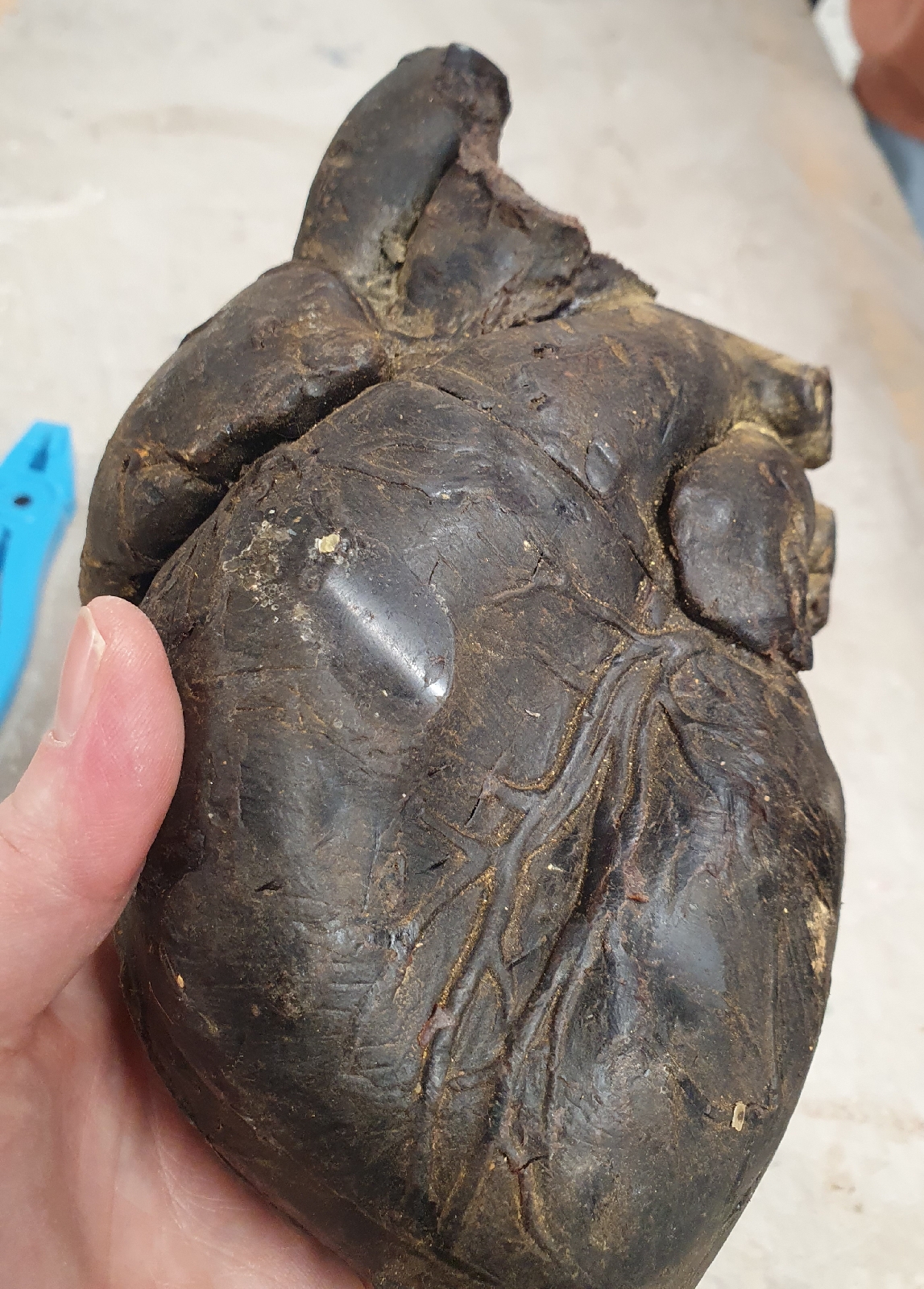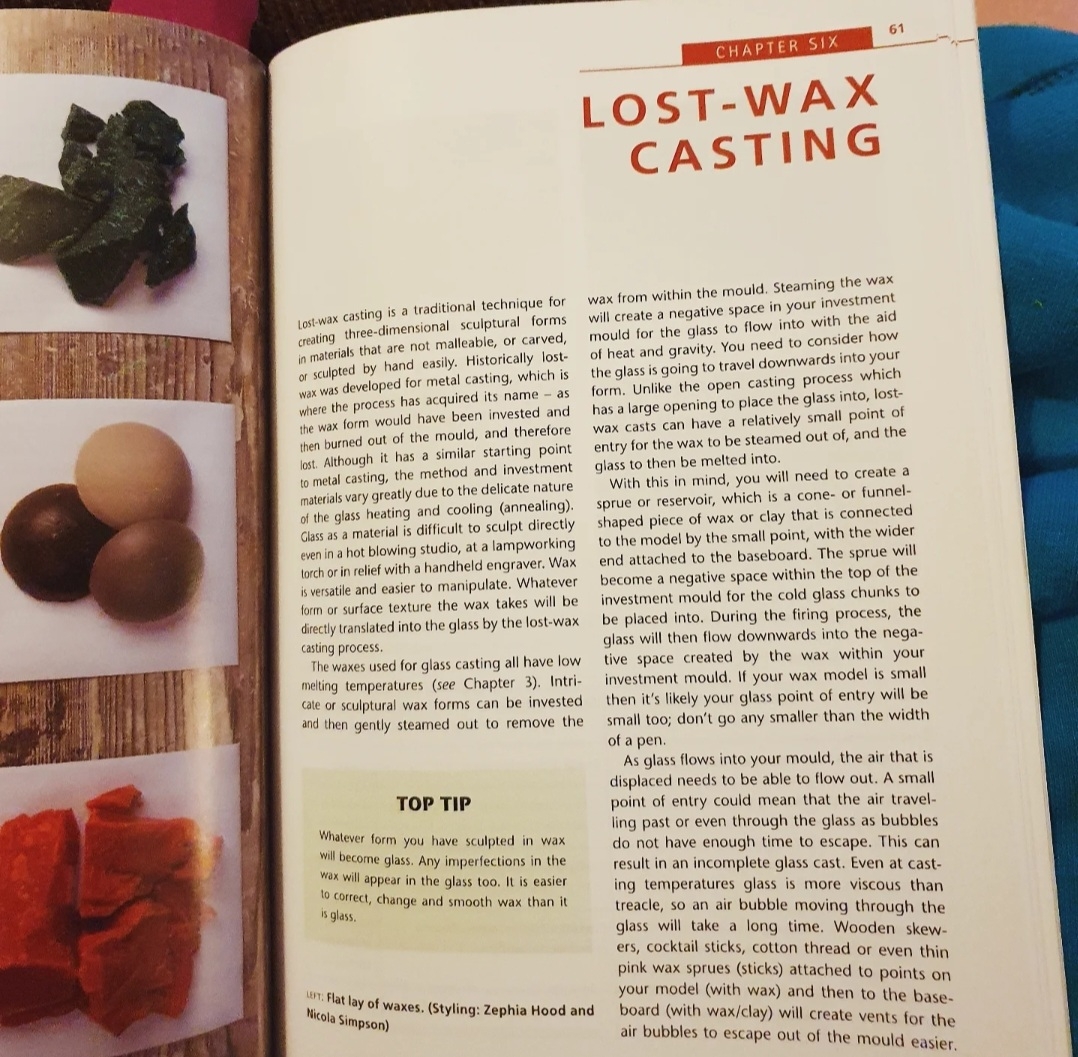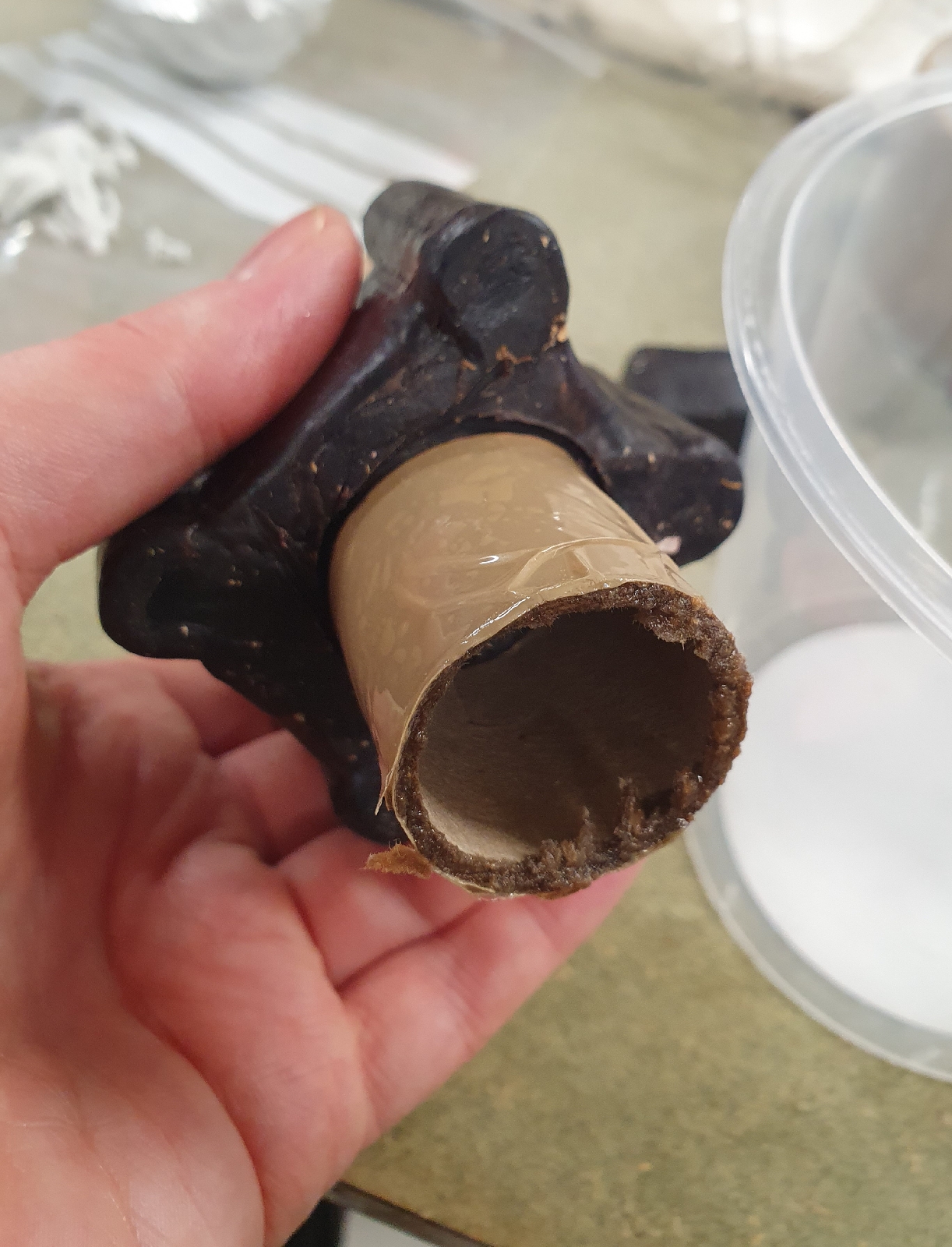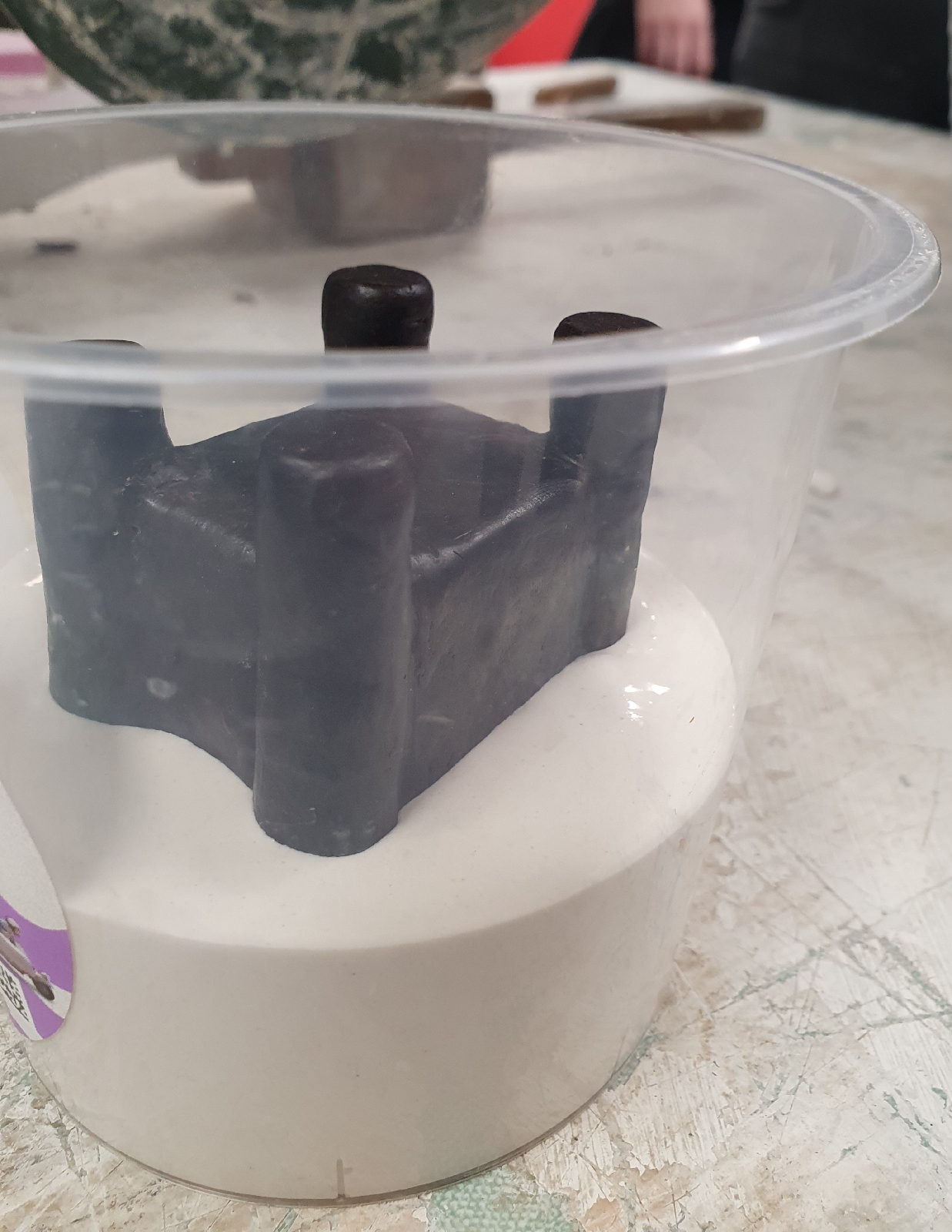Creating glass investment molds and the lost-wax process
I have never worked with glass, beyond smashing the odd jar, so I am looking forward to learning some new skills during this project.
I was lent an enormous block of Type B modeling wax in the shape of a heart. It was quite hard to work with until broken down into smaller pieces. Fitting really.
I am sculpting a positive castle model in this wax, which I will then cast to create a negative investment mould. An investment mold is a container for solid glass pellets to be poured into and then melted in a kiln, using a specific investment powder. The powder is made up of plaster and a refractory material mix; the latter being some form of quartz, usually silica. When combined, the two powders support each other and are therefore able to retain their structural integrity at glass-casting firing temperatures; around 900⁰C.
After melting the wax out with steam, also known as a burn-out process, I will cast the investment mold using glass pellets, also known as frit.
After experimenting with lots of detail and design elements, I settled for a primitive abstract form.
I am not trying to depict a specific castle, I am trying to evoke the qualities and concept of a castle, so this is an acceptable choice. It is also pleasing to mine eye. That's an Alan Partridge quote.
I attached a cardboard tube to act as a glass reservoir in the base. The frit takes up more volume solid than it does liquid so this mechanism will feed a steady supply of glass into castle mold as it melts.
I glued the cardboard tube to the bottom of a disposable container and then sunk it in an equal parts mix of luke warm water, plaster, quartz and molochite.
The castle piece started floating as I submerged it, so I held it in place with a piece of pasta until the plaster mix was set enough to remove it and plug the hole using my finger.









